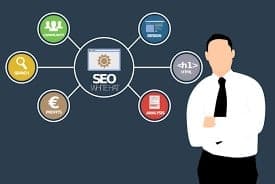
What Is Content Marketing?
Content that provides useful information should be at the core of every marketing campaign
A forward-thinking marketer knows there has to be a better way than traditional marketing, which is becoming less and less effective by the day.
That’s where content marketing comes in.
The goal of content marketing is to create and distribute valuable, relevant, and consistent content to attract and retain a clearly-defined audience – and ultimately, to drive profitable customer action.
Instead of pitching your products or services, you are offering truly relevant and useful content to help your prospects and customers.
Leading brands use content marketing
According to our annual research, content marketing is used by the vast majority of marketers. A number of prominent organizations use it, including P&G, Microsoft, Cisco, and John Deere. Small businesses and solo entrepreneurs around the world are also implementing it. What’s the reason? It works.
Using content marketing benefits your bottom line as well as your customers
There are four main reasons – and benefits – for enterprises to use content marketing:
- An increase in sales
- Savings on costs
- More loyal customers mean better business
- The use of content as a profit center
Marketing is about content – and it is the future
One more time, read the content marketing definition, but without the relevant and valuable words. That’s the difference between content marketing and the other information you get from companies trying to sell you things. Most of the time, companies send us information that is not very relevant or valuable (can you say spam?). In an environment where people receive thousands of marketing messages per day, content marketing is intriguing.
Without great content, marketing is impossible
Regardless of what type of marketing tactics you use, content marketing should be a part of your process, not a separate component. All forms of marketing require quality content:
- Social media marketing: Content marketing takes precedence over social media marketing.
- SEO: Businesses that publish quality, consistent content is rewarded by search engines.
- PR: Good PR focuses on the needs of readers rather than the businesses.
- PPC: In order for PPC advertising to work, you need great content.
- Inbound marketing: Content is the key to driving inbound traffic and generating leads.
- In almost every content marketing strategy, content strategy is part of the process.
Wouldn’t it be great if your customers looked forward to receiving your marketing? What if they spent 15, 30, 45 minutes on it when they received it, either via print, email, or website? Wouldn’t it be great if they anticipated it and shared it with their peers or made it go viral?
We can help you if you are interested and ready to learn more.
Step 1: Recalibrate your view of content’s value potential
Typically, when companies struggle with content marketing, two misconceptions are to blame:
- The value of content is often defined in terms of the assets themselves. In this case, the business views content marketing merely as a means to produce marketing collateral that can be used for direct marketing. Consequently, the business assumes that “doing content marketing correctly” involves hiring some content creators who deliver materials to brand managers, demand generation teams, or sales teams who use these materials to get “attention” from prospective customers. There is an ever-increasing pressure to meet the demand for content here. This is part of the Faustian bargain. Despite becoming moderately successful at pumping out good content, most fail to build anything of lasting value. The only thing they do is put in more effort without enabling the returns from those efforts to scale. When the well runs dry, they get stuck in an even deeper hole that they dug for themselves, without any plan for how to escape. At that point, the business might ask, “Why should we invest in more depth?”? Shouldn’t more people create this type of content today?” or “Can’t we simply outsource this? There is only one solution: keep digging.
- Content is only seen as a way to generate sales: Here, the business believes the value of content marketing lies in how much more efficient (or effective, in some cases) it is at converting prospects into leads or sales opportunities. It is precisely this straight line to revenue that the above-mentioned CMO was so desperately looking for. However, here’s the thing: Content may have a greater chance of closing or attracting new leads than any other form of advertising. Then again, it might not. In fact, content marketing can prove to be more expensive or less effective than advertising, and it can even slow down progress through the stages of the brand-consumer relationship. To put it simply: Content marketing doesn’t move customers down the funnel faster, cheaper, or more effective than other marketing techniques. Its greater power lies in its ability to produce a better customer, a more loyal customer, or a customer who is more likely to share his or her story with others – which compounds the value he or she provides to the business. Yet when we check how much more marketing can deliver, we ignore this important potential.
Step 2: Build assets with greater strategic value
Based on years of exploring our industry’s evolving landscape, Digital Papercuts has found that the greatest potential for content marketing success lies in viewing content as a strategic business activity that simply happens to be carried out by marketers, rather than as a marketing tactic that is employed to produce incremental marketing results.
Content marketing isn’t a replacement for other forms of marketing – it just makes them more effective. But how? Content marketing creates a strategic asset that is critical to the success of a company: a subscribed audience.
Content marketing builds a strategic asset: a subscribed audience
Content marketing is a different kind of marketing investment because it has the potential to provide multiple lines of business value simultaneously. Content marketing enables brands to build an engaged audience of people who can do certain things – like sharing personal info more freely, taking upselling opportunities more seriously, and becoming brand ambassadors. When you compel your audience to adopt these behaviors with your content, not only does your business become more likely to achieve its long-term marketing goals, but it can also open up new business opportunities – and even new revenue streams.
It is not so much that top-of-the-funnel activities should change the purpose of content, but rather that content should be strategically designed to add a valuable dimension to all your marketing efforts by contributing a new form and function.
Step 3: Follow our framework to bring everything together
Our Content Marketing Framework has been around for years now and many of our clients have benefited from it. A high-level overview of brand storytelling principles was its purpose at the time.
As a result, Digital Papercuts has assisted over 100 brands with putting these core values into practice. We learned a lot from those partnerships about which parts of the framework worked, which ones didn’t, and where we still needed to provide greater clarity and transparency.
The new process model added to each node reflects the insights I discussed above, as well as the many shifts that have occurred across the digital ecosystem.
Let us introduce the redesigned Content Marketing Framework for 2021. Imagine it as a syllabus covering five key elements needed to run successful, scalable, and highly strategic content marketing operations within an organization:
- Purpose and goals: Explain why you are creating content and what it will achieve
- Audience: Who you are creating content for and how it will benefit them
- Story: How you will build your content assets around specific, unique, and valuable ideas
- Process: How you will structure and manage your operations to implement your plans
- Measurement: How you will measure performance and continuously optimize your efforts
Need Help With Content?
Try our Content Ninja Software to help create great content in a matter of minutes instead of hours or days.





